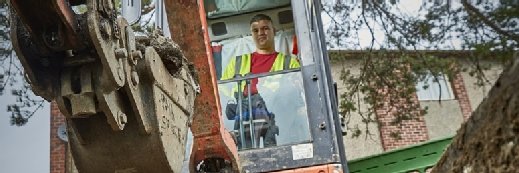
UK broadband trial to investigate connectivity through water pipes
Government-backed scheme to target broadband for hard-to-reach homes with fibre optic cables fed through utility mains, businesses and mobile masts without digging up roads
Though not a novel idea, with similar trials being undertaken as far back as the early 1990s, the UK government has announced it is bankrolling a three-year project to accelerate roll-out of broadband and mobile signals, part of which will see fibre broadband cables fed through the country’s water pipes.
The move is part of the government’s plan to speed up the nationwide roll-out of ultra-fast broadband and mobile coverage in rural areas, which aims to see gigabit connectivity to 85% of the UK by 2025.
Yet despite the leading fixed broadband providers and mobile players developing full-fibre and cable gigabit networks, and mobile operators rolling out 5G, given further impetus by the UK government’s Shared Rural Network (SRN) programme designed to bring reliable 4G phone signals to many of the most isolated parts of the country, there are still wide areas of rural UK that are poorly served by traditional connections. Almost 200,000 UK homes are currently struggling with speeds below 10Mbps – the level that UK telecoms regulator Ofcom considers a decent service.
To rectify this situation, the UK government has announced that it is making £4m available for innovators to trial what could be a quicker and more cost-effective way of connecting fibre optic cables to homes, businesses and mobile masts, without the disruption caused by digging up roads and land. Indeed, it added that civil works, in particular installing new ducts and poles, can make up as much as four-fifths of the costs to industry of building gigabit-capable broadband networks.
The project will also look to test solutions that reduce the amount of water lost every day due to leaks, which is calculated as being in the region of 20% of the total put into the public supply. It will involve putting connected sensors in the pipes which allow water companies to improve the speed and accuracy with which they can identify a leak and repair it.
Water companies have committed to delivering a 50% reduction in leakage, and this project can help to reach that goal. The UK government added that deployment challenges for essential utilities such as water and telecoms are complex and tightly regulated because both are parts of the country’s critical national infrastructure. The project will consider these regulatory barriers as well as the economic, technical, cultural and collaborative challenges, and impact on consumer bills.
“The cost of digging up roads and land is the biggest obstacle telecoms companies face when connecting hard-to-reach areas to better broadband, but beneath our feet there is a vast network of pipes reaching virtually every building in the country,” said UK digital infrastructure minister Matt Warman. “So, we are calling on Britain’s brilliant innovators to help us use this infrastructure to serve a dual purpose of serving up not just fresh and clean water but also lightning-fast digital connectivity.”
Read more about UK broadband
- UK Parliament’s Business, Energy and Industrial Strategy Committee hears experts from the world of satellite communications cast doubt on the intrinsic value of the UK government’s ambition to be a sovereign satellite provider.
- Government solutions division of Luxembourg-based satellite operator SES uses O3b medium earth orbit constellation to deliver mission-critical communications to the edge in Asia.
- Satellite broadband is showing signs of beginning to take off in the UK, with further gains expected as Starlink arrives and BT teams with OneWeb.
The government is already considering giving broadband firms access to more than a million kilometres of underground utility ducts to boost the roll-out of next-generation broadband – including electricity, gas and sewer networks – and will soon respond to a consultation on changing regulations to make infrastructure sharing easier.
In June 2020, it first announced that it was considering whether to give broadband firms access to more than a million kilometres of underground utility ducts to boost the roll-out of next-generation broadband, as it pursues plans to establish gigabit broadband across the country. It has also already given broadband suppliers access to existing infrastructure to help speed up roll-out, with electricity poles used extensively throughout England to carry broadband cables.
The Fibre in Water project is due to conclude in March 2024. The final year of the project will explore scaling proven solutions right across the country. The UK government has also launched a competition to select a consortium, which could comprise telecoms companies, utility providers and engineering companies, to lead and deliver the project. As part of this, a region or multiple regions of the country will be selected to host the trial. Deadline for applications to the competition is 4 October 2021.
The scheme has already received cautious welcome from leading broadband technology players. Dahwood Ahmed, regional director for UK & Ireland at Extreme Networks, noted that while it was positive to hear of the government’s plan to speed up the nationwide roll-out of high-speed internet access, the scale of the project could not be understated.
“Feeding cables through the country's water pipes is a smart, efficient and creative approach,” he said. “But to fully close the connectivity gap, the problem needs to be addressed with more than one solution.
“One already proven option is the adoption of altnets ... To close the UK connectivity gap once and for all, the government and technology innovators need to work together. Only then will citizens and businesses in the UK enjoy infinitely distributed high-speed connectivity, wherever they may be located.”









